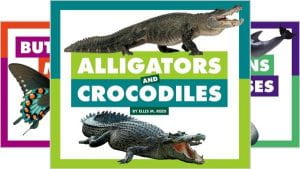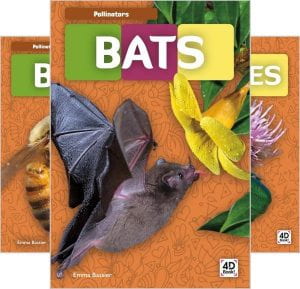 Comparing Animal Differences. The Child’s World, 2020. $19.95 each. $342 for a set of 12. 24 Pages. Grades K-3.
Comparing Animal Differences. The Child’s World, 2020. $19.95 each. $342 for a set of 12. 24 Pages. Grades K-3.
Reed, Ellis M. Alligators and Crocodiles. 978-1-503-83590-0.
—. Llamas and Alpacas. 978-1-503-83593-1.
York, M. J. Butterflies and Moths. 978-1-503-83587-0.
—. Toads and Frogs. 978-1-503-83586-3.
Pearson, Marie. Dolphins and Porpoises. 978-1-503-83589-4.
—. Leopards and Cheetahs. 978-1-503-83592-4.
—. Wasps and Bees. 978-1-503-83594-8.
Gale, Ryan. Hares and Rabbits. 978-1-503-83591-7.
—. Turtles and Tortoises. 978-1-503-83588-7.
London, Martha. Lizards and Salamanders. 978-1-503-83595-5.
Ringstad, Arnold. Puffins and Penguins. 978-1-503-83596-2.
Gendell, Megan. Spiders and Daddy Long Legs. 978-1-503-83585-6.
Do you know what makes a toad different from a frog? Or a rabbit from a hare, or a lizard from a salamander? If you are like most readers, this is an ever confusing problem, which the writers of the Comparing Animal Differences series would like to simplify. Using short chapters of readable text with gorgeous photographs, each book highlights the animals separately, and then compares how to identify the difference. For example, lizards have scales and claws and hunt during the day, while salamanders are nocturnal and have no claws or scales. With labeled photos, a glossary and index, as well as extra links and activities to extend the learning, young readers will become knowledgeable naturalists in no time.
THOUGHTS: There are twelve books in this series. I have only reviewed two, but feel that the collection as a whole would be worth purchasing for class projects and personal interests. Plus, the idea of a compare and contrast assignment would be a useful note taking lesson.
550 Animals Dustin Brackbill, State College Area SD

